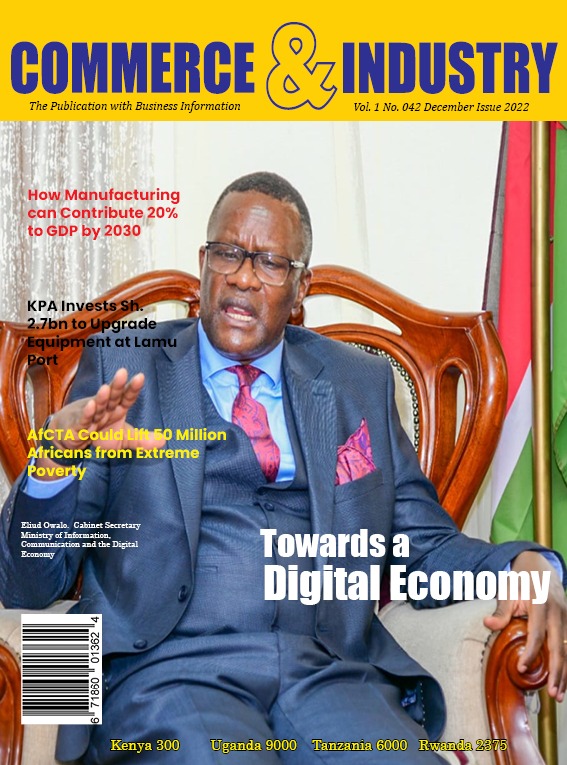
Diversify exports, Kenyan firms urged.
Exports from Kenya remain limited to the traditional primary, largely agricultural range with limited gains in the high-tech sectors.
The 2025 Country Economic Transformation Outlook by Kenya Institute of Public Policy and Research Analysis (KIPPRA) says most small businesses in the manufacturing sector are focused on domestic and regional markets rather than tapping into direct exports.
The report further says while Export Processing Zones have enhanced production capacity, diversification of products and markets remains limited.

According to the KIPPRA report, manufacturing activity in Kenya remains concentrated in low value added goods and is geographically limited to a few counties, mainly due to infrastructure gaps, market access challenges, and shortages of skilled labor.
High operational costs further hinder product innovation and export competitiveness.
While digital innovation has advanced, progress is slowed by an unfriendly business climate, limited financing options, and constrained market reach.
High input costs, regulatory hurdles, and complex licensing requirements continue to pose barriers, especially for small businesses.
Existing support programs are insufficient, and KIPPRA recommends targeted interventions such as establishing county level one-stop shops for MSME licensing, reforming microfinance to offer low-interest loans, and developing digital platforms to provide real time business information.
To boost women entrepreneurs, the report suggests mentorship through role models, peer learning opportunities, financial support, and temporary regulatory relief especially for digital startups.
Many firms lack basic worker protections, such as safe work environments, maternity or paternity leave, anti-harassment protocols, labor rights enforcement, and minimum wage compliance.
Female employees, in particular, face cultural biases, delayed payments, and exploitative practices.
Some of the high value export goods that can be targeted include:
Leather goods: Kenya has a large livestock population, making leather a potential area for value addition. Essential oils: The global market for natural and organic products is growing, and Kenyan essential oils like tea tree and lavender have potential. Handicrafts and artisanal products: Unique Kenyan handicrafts can be marketed to a global audience through e-commerce platforms. Processed agricultural products: Adding value to agricultural products, such as fruits and vegetables, can increase their market value.
Some of the Benefits of Targeting High-Value Goods include:
Increased export revenue: Value-added products command higher prices on the international market, leading to increased export earnings.
Economic growth: A more diversified export portfolio can drive overall economic growth and create jobs.
Enhanced global competitiveness: By focusing on high-quality, value-added products, Kenya can improve its standing in the global market.
Adding value to raw materials through processing and manufacturing can significantly increase the revenue generated from exports. For example, instead of exporting raw hides and skins, Kenya could export finished leather goods, capturing a larger share of the global market.
The Kenyan government is implementing initiatives like the National Export Strategy and the Route to Market Strategy to support Kenyan businesses in transitioning to high-value exports.
Further, the government is focusing on providing support to local industries through efforst to enhance access to affordable credit, targeted skills development, and stable tax policies to enable them to compete effectively in the international market.









